

The Badlands Guardian – Walsh, Alberta. Nuku Hiva. Giants' grave. Aerial view of the Giant's grave of Sa Domu 'e S'Orcu in Siddi.
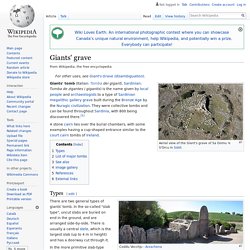
Giants' tomb (Italian: Tomba dei giganti, Sardinian: Tumba de zigantes / gigantis) is the name given by local people and archaeologists to a type of Sardinian megalithic gallery grave built during the Bronze Age by the Nuragic civilization. They were collective tombs and can be found throughout Sardinia, with 800 being discovered there.[1] A stone cairn lies over the burial chambers, with some examples having a cup-shaped entrance similar to the court cairn tombs of Ireland. Types[edit] There are two general types of giants' tomb. In the more primitive slab-type giants tombs, the central slab is unmodified aside from the entrance that is cut through it at the base, or else there is a crude dolmen-like arrangement of 3 uncut rocks to form the entrance (Osono, Sortali, Lolghi, Pescaredda).
The sepulchres have a characteristic rectangular plan with an apse. Nan Madol. Ruined city in Federated States of Micronesesia Nan Madol is an archaeological site adjacent to the eastern shore of the island of Pohnpei, now part of the Madolenihmw district of Pohnpei state in the Federated States of Micronesia in the western Pacific Ocean.
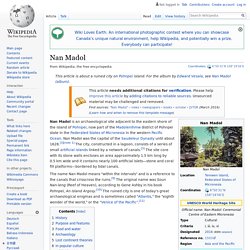
Nan Madol was the capital of the Saudeleur Dynasty until about 1628.[3][note 1] The city, constructed in a lagoon, consists of a series of small artificial islands linked by a network of canals.[3] The site core with its stone walls encloses an area approximately 1.5 km long by 0.5 km wide and it contains nearly 100 artificial islets—stone and coral fill platforms—bordered by tidal canals. Coral Castle. Coral Castle is an oolite limestone structure created by the Latvian-American eccentric Edward Leedskalnin (1887–1951).
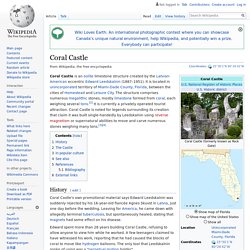
It is located in unincorporated territory of Miami-Dade County, Florida, between the cities of Homestead and Leisure City. The structure comprises numerous megalithic stones, mostly limestone formed from coral, each weighing several tons.[2] It is currently a privately operated tourist attraction. Coral Castle is noted for legends surrounding its creation that claim it was built single-handedly by Leedskalnin using reverse magnetism or supernatural abilities to move and carve numerous stones weighing many tons.[3][4] History[edit] Coral Castle's own promotional material says Edward Leedskalnin was suddenly rejected by his 16-year-old fiancée Agnes Skuvst in Latvia, just one day before the wedding.
Edward spent more than 28 years building Coral Castle, refusing to allow anyone to view him while he worked. Göbekli Tepe. Archaeological and UNESCO World Heritage Site The details of the structure's function remain a mystery.
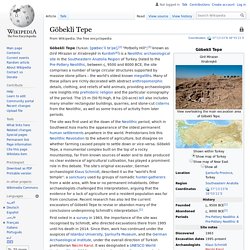
The excavations have been ongoing since 1996 by the German Archaeological Institute, but large parts still remain unexcavated. In 2018, the site was designated a UNESCO World Heritage Site.[10] Chronological context[edit] Statue of a wild boar, Göbekli Tepe, 9000 BCE While the site formally belongs to the earliest Neolithic (PPNA), to date no traces of domesticated plants or animals have been found. Archaeologists estimate that up to 500 persons were required to extract the heavy pillars from local quarries and move them 100–500 meters (330–1,640 ft) to the site.[12] The pillars weigh 10–20 metric tons (10–20 long tons; 11–22 short tons), with one still in the quarry weighing 50 tons.[13][dubious ] "Vulture Stone", Gobekli Tepe. Carnac stones. The Ménec alignments, the most well-known megalithic site among the Carnac stones Stones in the Kerlescan alignments Although the stones date from 4500 BC, modern myths were formed which resulted from 1st century AD Roman and later Christian occupations, such as Saint Cornelius[3] – a Christian myth associated with the stones held that they were pagan soldiers in pursuit of Pope Cornelius when he turned them to stone.[4][5][6] Brittany has its own local versions of the Arthurian cycle.

Local tradition claims that the reason they stand in such perfectly straight lines is that they are a Roman legion turned to stone by Merlin. In recent centuries, many of the sites have been neglected, with reports of dolmens being used as sheep shelters, chicken sheds or even ovens.[7] Even more commonly, stones have been removed to make way for roads, or as building materials. Baalbek. City in Baalbek-Hermel, Lebanon Baalbek (/ˈbɑːlbɛk/),[1] properly Baʿalbek (Arabic: بعلبك, romanized: Ba’labakk, Syriac-Aramaic: ܒܥܠܒܟ) and also known as Balbec, Baalbec or Baalbeck,[5] is a city located east of the Litani River in Lebanon's Beqaa Valley, about 85 km (53 mi) northeast of Beirut.

Oxkintok. Map of NW Yucatán, showing major ecological zones and the location of Oxkintok Tzat Tun Tzat or "ancient labyrinth".
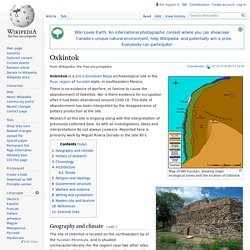
There is no evidence of warfare, or famine to cause the abandonment of Oxkintok. Nor is there evidence for occupation after it had been abandoned around 1500 CE. Gunung Padang Megalithic Site. Gunung Padang is a megalithic site located in Karyamukti village, Cianjur regency, West Java Province of Indonesia, 30 km southwest of the city of Cianjur or 6 kilometers from Lampegan station.
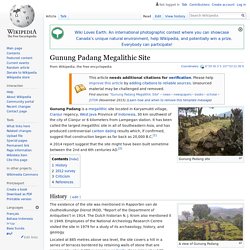
It has been called the largest megalithic site in all of Southeastern Asia, and has produced controversial carbon dating results which, if confirmed, suggest that construction began as far back as 20,000 B.C.[1] A 2014 report suggest that the site might have been built sometime between the 2nd and 6th centuries AD.[2] History[edit] The existence of the site was mentioned in Rapporten van de Oudheidkundige Dienst (ROD, "Report of the Department of Antiquities") in 1914. The Dutch historian N. Located at 885 metres above sea level, the site covers a hill in a series of terraces bordered by retaining walls of stone that are accessed by about 400 successive andesite steps rising about 95 metres.